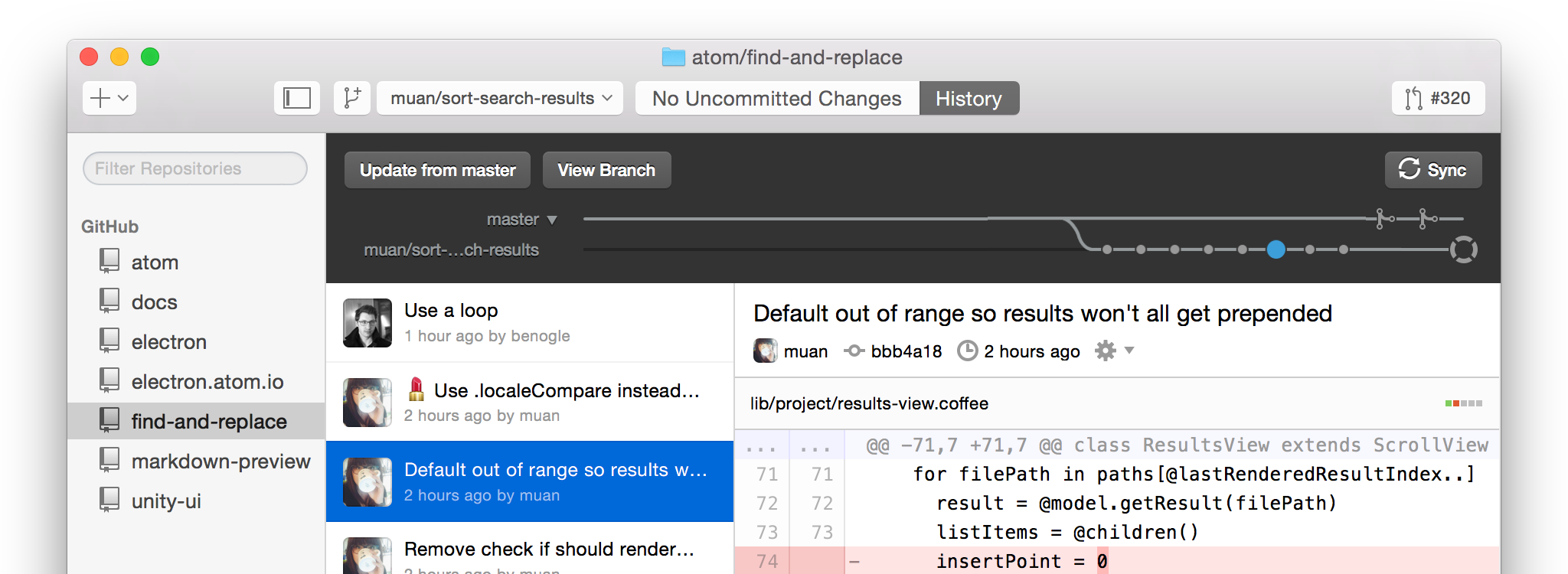

- Github desktop lfs manual#
- Github desktop lfs license#
- Github desktop lfs download#
- Github desktop lfs free#
- Github desktop lfs windows#
Github desktop lfs free#
Otherwise, SourceTree is a terrific enterprise-grade Git GUI that’s completely free to use. So you’ll need to find a different client if you’re on Linux. On the downside, SourceTree doesn’t currently support Linux. In addition, it’s an Atlassian product, meaning that it integrates seamlessly with GitHub and BitBucket.
Github desktop lfs windows#
For instance, you can view detailed branching diagrams, work with large Git files, clone remote repositories, and search local file changes from within SourceTree.įinally, SourceTree supports Windows and Mac. Moreover, the GUI platform is packed with useful features to simplify your workflow without the help of a command line. However, you can also perform more complex actions, such as cherry-picking between branches and reviewing changesets and stash. Right off the bat, SourceTree offers simple visibility to your branches or commits in a single click. In addition, SourceTree’s ease of use and intuitive interface makes it an ideal choice for beginner coders. It works almost as well as paid clients and is an excellent alternative to GitForce if you prefer free GUI clients. SourceTree is a surprisingly robust free Git client. However, you may need a more robust client to perform more elaborate command line functions. There isn’t much else to say about GitForce except that it is a free tool that allows you to perform basic Git tasks without using your command line. Instead, you copy the single file on your computer and execute it to start using the client.
Github desktop lfs download#
Again, GitForce is free to use, and you don’t have to download the software. It has an intuitive user interface and is easy for beginners to master. In addition, it lets you perform the most common Git functions, including creating Git repositories and branches, accessing your Git history, and scanning local repositories.Īdditionally, GitForce supports Windows and Linux. It’s easy for beginners and reduces the need to use the command line.

GitForce is an exemplary GUI client if you’re looking for a free tool. Otherwise, SmartGit is a terrific cross-platform GUI client that offers consistent UI across all your platforms. In addition, the client offers multiple complex features which may take some time to get accustomed to. On the downside, while SmartGit is generally easy to use, it has a significant learning curve.

Github desktop lfs license#
You can use one license for up to three machines.

Alternatively, you can purchase a lifetime license for a one-time fee of $285. SmartGit plans start at $5.90 per month or $59 per year. Git-Flow for high-level branch handling.Drag-and-drop commit merging, reordering, or rebase.Some of the other SmartGit notable features include: SmartGit also easily integrates with the major Git hosting platforms, including GitHub, GitLab, Bitbucket, and Azure DevOps. For instance, you can configure your repository branches, automatically resolve merge conflicts, and compare, edit, and merge files side-by-side without touching the command line.
Github desktop lfs manual#
It has many easy-to-use features, so you’ll only need to use manual commands sparingly. It’s also one of the easiest Git clients to master, making it a good choice for people new to Git. The platform supports Windows, Linux, and macOS and features an intuitive interface despite your chosen platform. SmartGit is a top choice if you’re looking for a multi-platform Git GUI client. With this in mind, below are the best Git GUI clients to consider for your projects. It is easy to see why GUI clients are popular among novice and seasoned developers. The GUI also presents possibilities that some developers didn’t even know existed in Git. Instead, you simply click buttons to achieve the same actions as the command line. The GUI also eliminates the need to write commands in a terminal to perform actions. Here, you can visualize repository activity, command history, branches, changes to branches, and much more. These clients offer a visual alternative to your command line. That’s where the graphical user interface (GUI) comes in. However, even seasoned developers can admit to being slowed down by repetitive and complex commands. Admittedly, the command line can be challenging to master, especially for beginners. The command line interface (CLI) offers a central place to interact and manage your Git version control system.


 0 kommentar(er)
0 kommentar(er)
